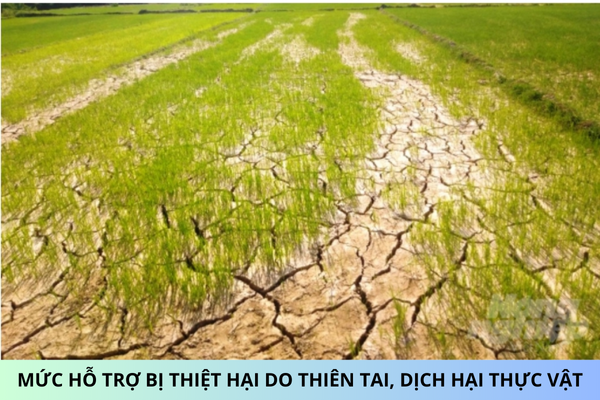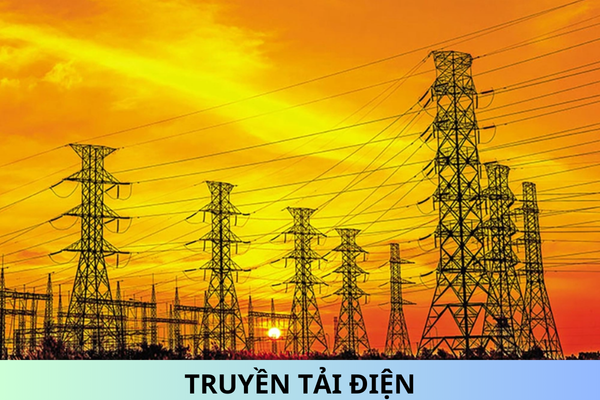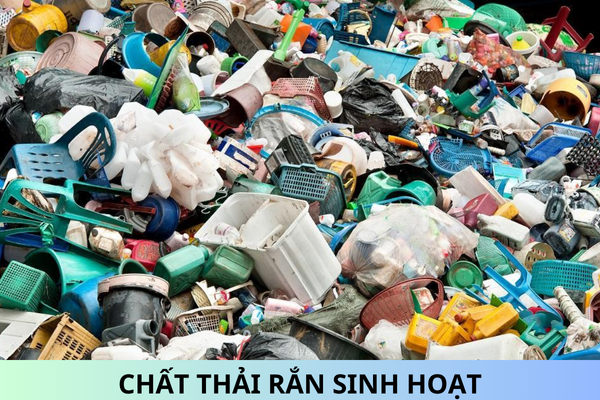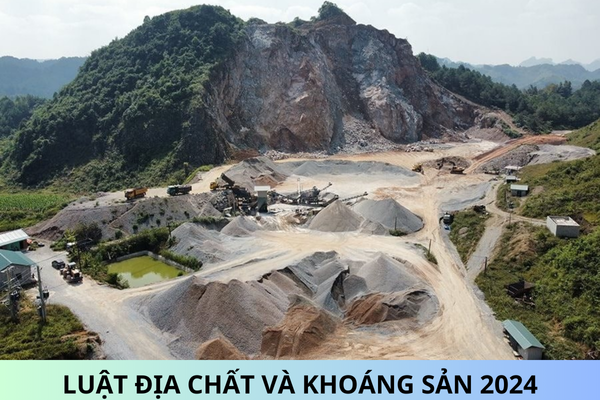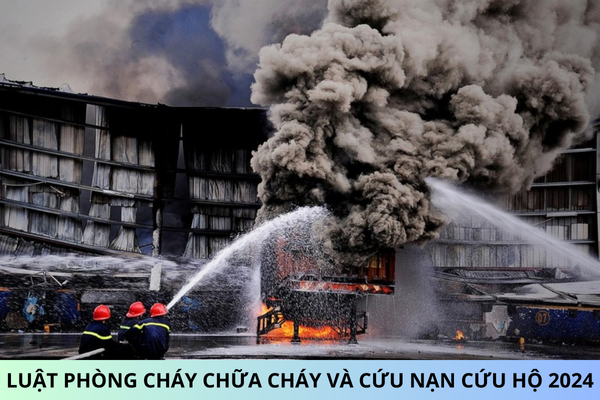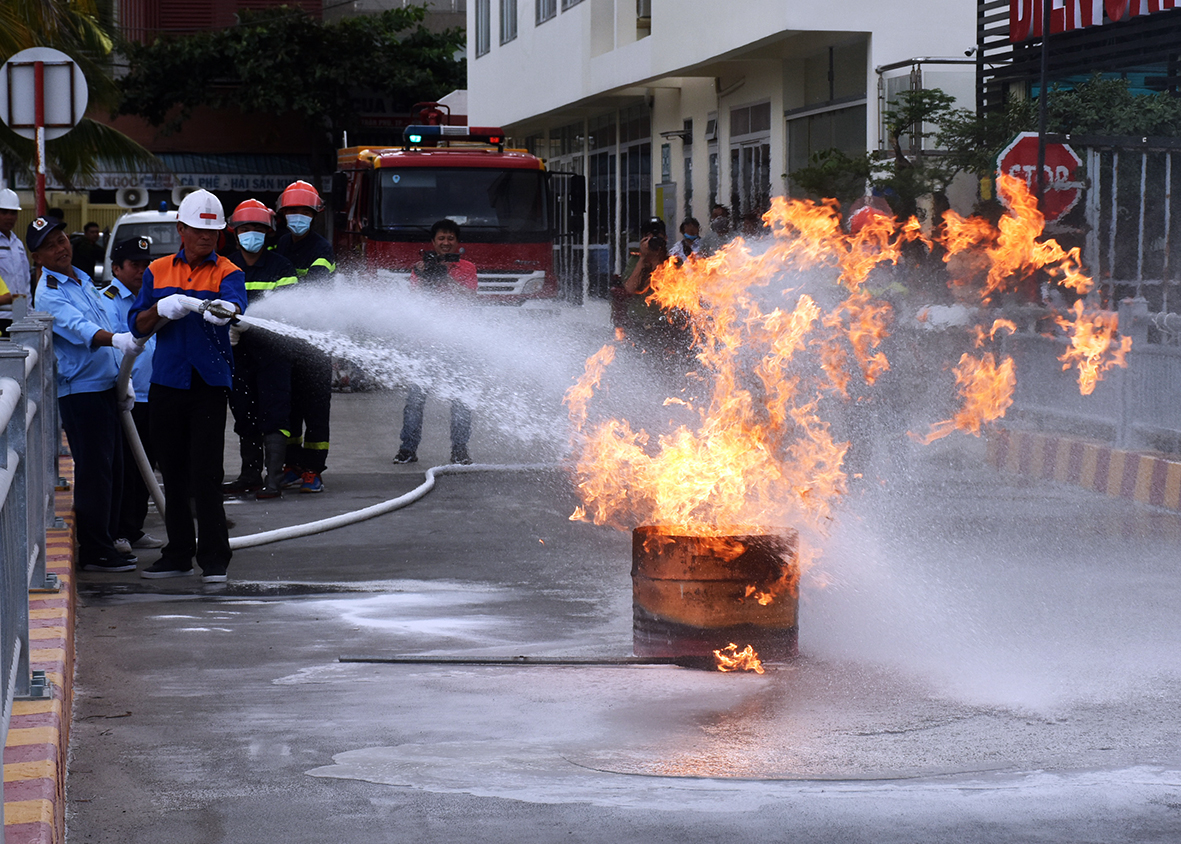What are included in the list of facilities subject to fire prevention and fighting management from 15/5/2024 in Vietnam?
What are included in the list of facilities subject to fire prevention and fighting management from 15/5/2024 in Vietnam? - Mr. Bao (Ha Noi)
What are included in the list of facilities subject to fire prevention and fighting management from 15/5/2024 in Vietnam?
Pursuant to Appendix 1 of the Decree 50/2024/ND-CP stipulating the list of facilities subject to fire prevention and fighting management from 15/5/2024 in Vietnam:
- Headquarters of regulatory bodies at all levels.
- Apartment buildings; tenement houses, dormitories; mixed-use buildings.
- Nursery schools; kindergartens, preschools; elementary schools, lower secondary schools, upper secondary schools; secondary schools; colleges, universities, academies; professional secondary schools; vocational schools; continuing education institutions; other educational institutions established under the Law on Education.
- Hospitals; polyclinics, specialized clinics, facilities that provides care, rehabilitation, and orthopaedic, nursing homes, disease prevention centers, medical centers, other medical facilities established under the Law on Examination and Treatment.
- Theaters, cinemas, circuses; convention centers; cultural houses; karaoke establishments, discotheques, bars, clubs; amusement parks, zoos, aquariums.
- Markets; shopping centers, electronics stores; supermarkets; food and beverage establishments with a total business area of 100 m2 or more or a total volume of 500 m3 or more; establishments trading in flammable and explosive goods with a total business area of 50 m2 or more or a total volume of business buildings of 200 m3 or more.
- Hotels, guesthouses, motels; other accommodation establishments established under the Law on Tourism; boarding houses.
- Buildings used as office headquarters for enterprises, political and social organizations.
- Museums, libraries; exhibition halls; galleries, archives, bookstores, fair houses; religious establishments.
- Buildings of postal service points, postal facilities, telecommunications facilities; data storage and management centers; radio and television facilities; publishing and printing facilities.
- Stadiums; sports halls; indoor sports centers; fitness and sports centers; racetracks, shooting ranges; other sports facilities established under the Law on Physical Training and Sports.
- Airports; air traffic control towers; seaports; hangars, dry ports; inland waterways ports; bus terminals; rest stops; cable car stations for passenger transport; subways; motor vehicle registration facilities; businesses engaging in trading, repair and maintenance of motor vehicles.
- Car garages and parking lots established as per the law.
- Road tunnels and railway tunnels with a length of 500 meters or more.
- Nuclear facilities; facilities for production, trade, storage, and use of industrial explosives and explosive precursor substances; warehouses for industrial explosives and explosive precursors; ports for export and import of industrial explosives and explosive precursors; warehouses for weapons and support tools.
- Facilities for exploitation, processing, production, transportation, trade, and storage of petroleum and petroleum products, natural gas on land; oil and petroleum product depots, gas depots; ports for export and import of petroleum and petroleum and gas products; oil and gas retailers, flammable liquid retail stores; gas retail stores.
- Industrial establishments with fire and explosion hazard classes A, B, C, D, E.
- Power plants; substations with voltage of 110 kV or higher.
- Tunnels for production, storage, and use of flammable and explosive substances; national reserve warehouses; warehouses for flammable goods and materials; storage areas for flammable goods, materials, and scrap with an area of 500 m2 or more.
- Other establishments not included in the list from items 1 to 19 that have an internal gasoline filling station or use a central gas supply system with a total gas consumption of 70 kg or more.
- Mixed-use buildings for dwelling and production and trade of flammable and explosive goods with a floor area for business purposes of 50 m2 or more.
What are included in the list of facilities subject to fire prevention and fighting management from 15/5/2024 in Vietnam? - image from internet
What are basic measures for fire prevention in Vietnam?
Pursuant to Article 14 of the Law on fire prevention and fighting in 2001 stipulating basic measures for fire prevention in Vietnam:
Basic measures for fire prevention
1. Strictly managing and safely using inflammables, explosives, flame and heat sources, flame- and/or heat-generating equipment and devices as well as substances; meeting fire prevention safety conditions.
2. Conducting regular and periodical inspection to detect loopholes and shortcomings in fire prevention and fighting so as to take timely remedies.
As regulated above, there are 02 basic measures for fire prevention, including:
- Strictly managing and safely using inflammables, explosives, flame and heat sources, flame- and/or heat-generating equipment and devices as well as substances; meeting fire prevention safety conditions.
- Conducting regular and periodical inspection to detect loopholes and shortcomings in fire prevention and fighting so as to take timely remedies.
What are policies for participants in fire fighting in Vietnam?
Pursuant to Article 10 of the Law on fire prevention and fighting in 2001 (amended by Clause 7 Article 1 of the Law on amendments to the Law on fire prevention and fighting in 2013) stipulating regulations and policies for participants in fire fighting:
Regulations and policies for participants in fire fighting
The participants in fire fighting are entitled to the material benefits. In case of dealth, injury, harm to health, spirit or property loss, they shall be entitled to regulations and policies as prescribed by law.
As regulated above, the participants in fire fighting are entitled to following policies:
- They are entitled to the material benefits.
- In case of dealth, injury, harm to health, spirit or property loss, they shall be entitled to regulations and policies as prescribed by law.
Best regards!
